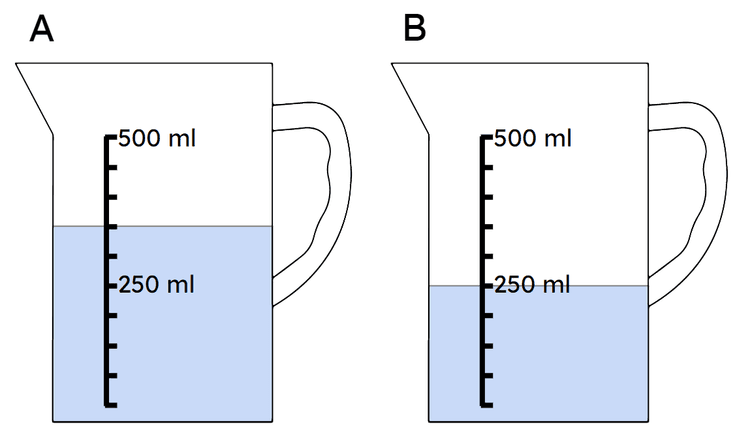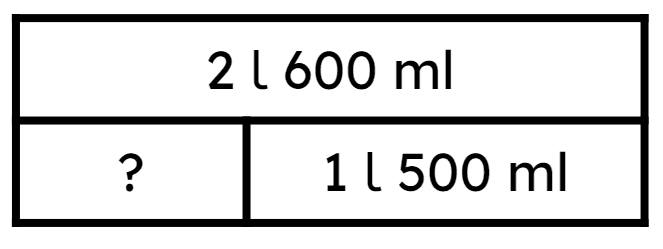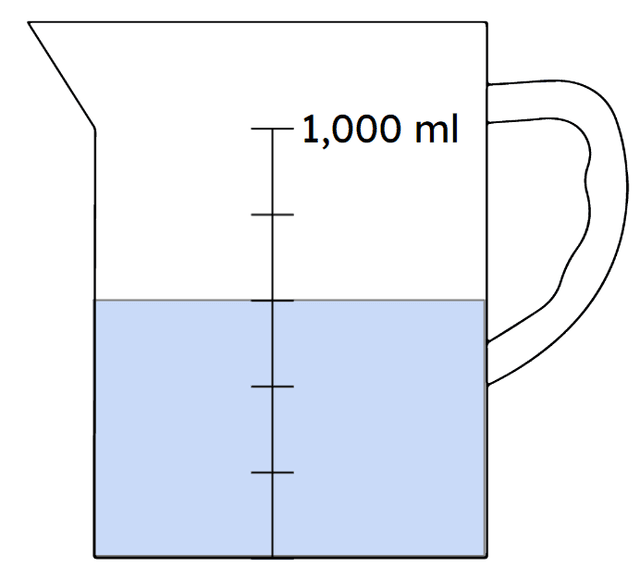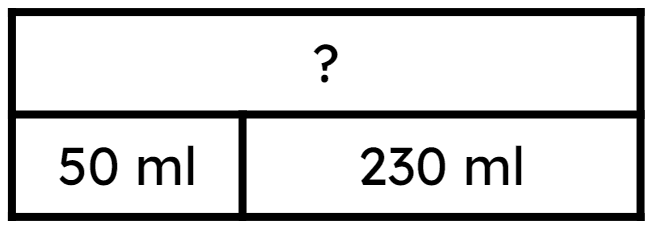Myths about teaching can hold you back
- Year 3
- Year 3
Solve problems involving volume
I can solve problems involving volume.
These resources were made for remote use during the pandemic, not classroom teaching.
Switch to our new teaching resources now - designed by teachers and leading subject experts, and tested in classrooms.
Lesson details
Key learning points
- Visualising and representing problems as bar models (by identifying the parts and whole) helps us to solve problems..
- The bar model helps us to understand the structure of the maths and to form a calculation to help solve the problem.
- If parts are unequal, we can use additive relationships; if parts are equal, we can use multiplicative relationships.
- Number facts can be used when solving problems involving mass.
Keywords
Bar model - A bar model is a pictorial representation of a problem where bars are used to represent the known and unknown quantities.
Whole - The whole is all of something. It is complete.
Part - A part is some but not all of something. It is an amount or section which, when combined with others, makes up the whole.
Volume - Volume is the amount of space that an object takes up. In this case, the specific amount of liquid in a container. It can be measured in ml.
Common misconception
Children may misidentify the parts or wholes in a problem.
Children should be encouraged to visualise the problem to help them identify the parts and whole.
To help you plan your year 3 maths lesson on: Solve problems involving volume, download all teaching resources for free and adapt to suit your pupils' needs...
To help you plan your year 3 maths lesson on: Solve problems involving volume, download all teaching resources for free and adapt to suit your pupils' needs.
The starter quiz will activate and check your pupils' prior knowledge, with versions available both with and without answers in PDF format.
We use learning cycles to break down learning into key concepts or ideas linked to the learning outcome. Each learning cycle features explanations with checks for understanding and practice tasks with feedback. All of this is found in our slide decks, ready for you to download and edit. The practice tasks are also available as printable worksheets and some lessons have additional materials with extra material you might need for teaching the lesson.
The assessment exit quiz will test your pupils' understanding of the key learning points.
Our video is a tool for planning, showing how other teachers might teach the lesson, offering helpful tips, modelled explanations and inspiration for your own delivery in the classroom. Plus, you can set it as homework or revision for pupils and keep their learning on track by sharing an online pupil version of this lesson.
Explore more key stage 2 maths lessons from the Measures: mass and capacity unit, dive into the full primary maths curriculum, or learn more about lesson planning.

Licence
Prior knowledge starter quiz
6 Questions
Q1.Look at the picture. Which jug contains a greater volume of water?

Q2.Look at this bar model. What does the 1 L 500 ml represent?

Q3.Match the calculations with their answers.
220
210
230
310
Q4.Find the total of 2 L 300 ml and 1 L 400 ml.
Q5.Match the calculations with their answers.
60
70
80
90
Q6.What volume of water is in this jug?

Assessment exit quiz
6 Questions
Q1.Look at the problem and bar models. Which bar model is an accurate representation of the problem?

Q2.Look at the bar model. Sophia has 230 ml of water in her jug and Jacob has 50 ml water in his cup. What volume of water do they have altogether?

Q3.10 identical cups have an equal volume of water in them. The total amount of water in the cups is 680 ml. What is the volume of water in each cup?

Q4.Look at the bar model. The volume of water in the bottle is half the volume of water in the ten cups. What is the volume of water in the bottle?

Q5.Look at the bar model. How much greater is the volume of water in the bottle (340 ml) when compared to the volume of water in the cup (68 ml)?



